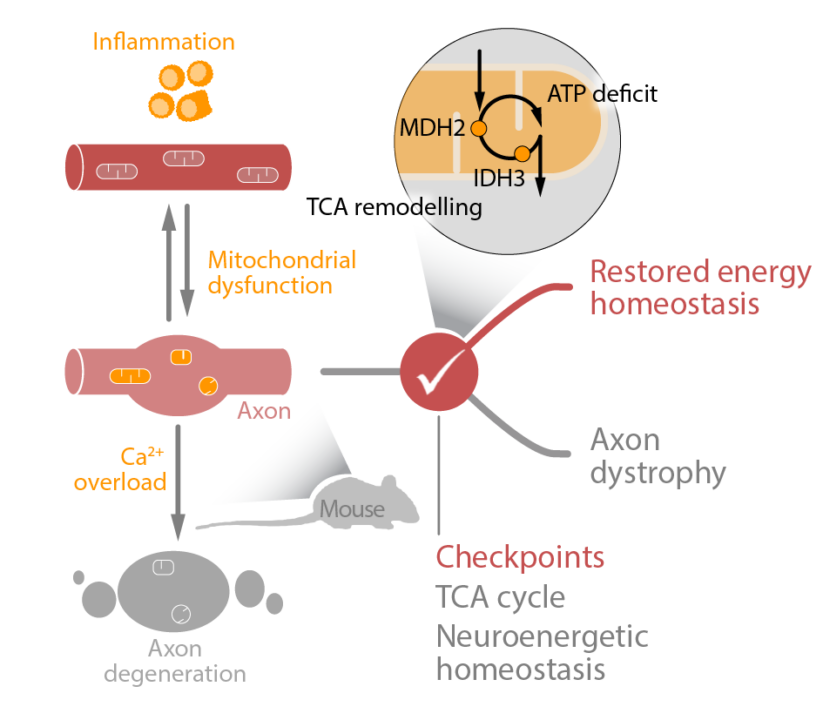Summary
In multiple sclerosis, an “energy crisis”, which entails axonal ATP depletion, contributes to neuronal dysfunction and ensuing neurodegeneration. We have identified dysregulation of the TCA cycle and specifically depletion of its pacemaker enzyme, IDH3, as a critical checkpoint of neuronal energy homeostasis. Targeting IDH3, however, leads only to partial reversal of axonal ATP deficits, pointing to further neuroenergetic checkpoints. We now plan to identify these checkpoints and study their reciprocal interaction with neuronal function in models of white and gray matter inflammation. To achieve this, we will combine cell-type specific omics approaches with metabolic biosensors and chemogenetic activity modulation.






